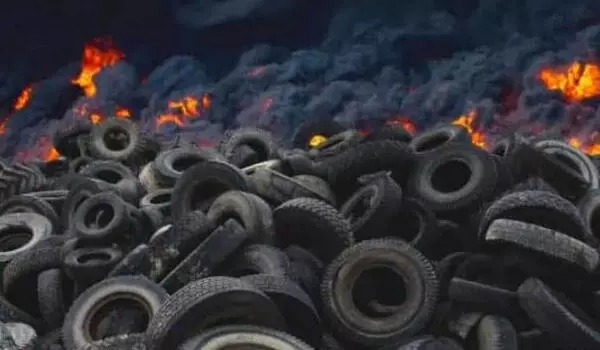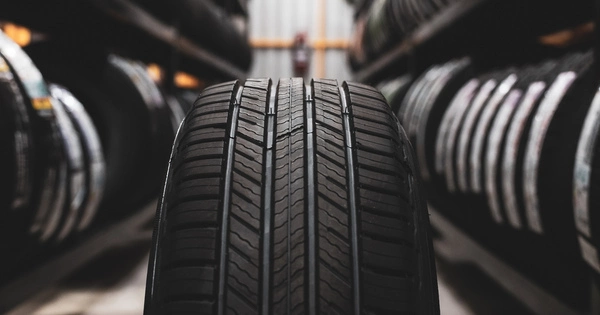According to the experts, it is essential to prioritize tackling toxic emissions from tires. Tires are one of the significant sources of microplastic pollution and hazardous chemicals that are harmful to human health and the environment.
More should be done, say experts, to limit the potentially harmful impact of toxic tire particles on health and the environment. More should be done, according to Imperial experts, to limit the potentially harmful impact of toxic tyre particles on health and the environment.
The researchers from Imperial College London’s Transition to Zero Pollution initiative warn that even if electric vehicles eliminate the problem of fuel emissions, there will still be a problem with the particulate matter due to tyre wear.
Every year, six million tonnes of tyre wear particles are released globally, and 2.6 million vehicles in London alone emit approximately nine thousand tonnes of tyre wear particles. Despite this, research on the environmental and health effects of tyre wear has been neglected in comparison to research and innovations aimed at reducing fuel emissions. According to the Imperial researchers, the effect of new technologies on the generation and impact of tyre wear should be prioritized.
In a new briefing paper, a multidisciplinary group of Imperial experts including engineers, ecologists, medics, and air quality analysts have called for as much investment in tyre wear research as there is in reducing fuel emissions – and understanding their interactions.
Tyre wear particles pollute the environment, the air we breathe, the water run-off from roads and has compounding effects on waterways and agriculture.
Dr Zhengchu Tan
Lead author Dr Zhengchu Tan, of Imperial’s Department of Mechanical Engineering, said: “Tyre wear particles pollute the environment, the air we breathe, the water run-off from roads and has compounding effects on waterways and agriculture. Even if all our vehicles eventually become powered by electricity instead of fossil fuels, we will still have harmful pollution from vehicles because of tyre wear.
“We urge policymakers and scientists to embark on ambitious research into tyre wear pollution to fully understand and reduce their impacts on biodiversity and health, as well as research to reduce the generation of these particles.”
Transition to Zero Pollution is an Imperial College London initiative that aims to foster new collaborations between research, industry, and government in order to achieve a zero-pollution future.
“Safeguarding our planet and the health of future generations requires us to look at a problem not just from a single perspective, but to take a systems level approach,” said Professor Mary Ryan, Vice Provost (Research and Enterprise) at Imperial College London and a co-author on the briefing paper. That is why we must look beyond carbon and consider all forms of human-made pollution.

“Electric vehicles are a crucial step forward to decarbonise transport, but we need to look at the big picture too. Some are concerned that electric vehicles tend to be heavier, which might increase tyre wear. This is exactly why Imperial College London is driving a holistic, joined-up approach to sustainability challenges.
“We will continue to leverage the full strength of our research and influence to find meaningful solutions and help realise a sustainable, zero pollution future.”
In the briefing paper, the researchers discuss how tyre wear leads to these particles, where the particles end up, their potential effects on people and planet, and why we must act now.
Tyre wear particles
As tyres degrade, they emit a variety of particles, ranging from visible pieces of tyre rubber to nanoparticles. Rain carries large particles from the road into rivers, where they may leach toxic chemicals into the environment, whereas smaller particles become airborne and are inhaled. They are small enough to reach deep into the lungs. Polyaromatic hydrocarbons, benzothiazoles, isoprene, and heavy metals such as zinc and lead may be present in these particles.
Environmental effects
Particulate matter from tyre wear is a significant source of ‘microplastics’ in rivers and oceans, and tyre wear in cities could pose up to a four-fold greater risk to the environment than other microplastics.
While existing technological interventions such as filters and environmental policies may help to reduce our environmental footprint, there are significant gaps in our knowledge, understanding, and ability to forecast the effects of tyre wear pollution.
Dr. Will Pearse of Imperial’s Department of Life Sciences, a co-author, stated: “Tyre waste does not degrade naturally and instead accumulates in the environment, where it may interact with other pollutants as well as biological organisms. Our gaps in understanding necessitate additional research and development of new solutions in order to limit all types of vehicular pollution.”
Health effects
The impact of tyre wear particles on human health is becoming increasingly concerning, and more research into the long-term effects on our health is urgently needed. There is emerging evidence that tyre wear particles and other particulate matter can have a negative impact on a variety of health outcomes, including heart, lung, reproductive, and cancer outcomes.
Professor Terry Tetley of Imperial’s National Heart and Lung Institute, a co-author, stated: “The impact of tyre wear on human health is becoming increasingly concerning. Because some of these particles are so small that they can be carried in the air, simply walking on the pavement may expose us to this type of pollution. It is critical that we gain a better understanding of the impact of these particles on our health.”
















